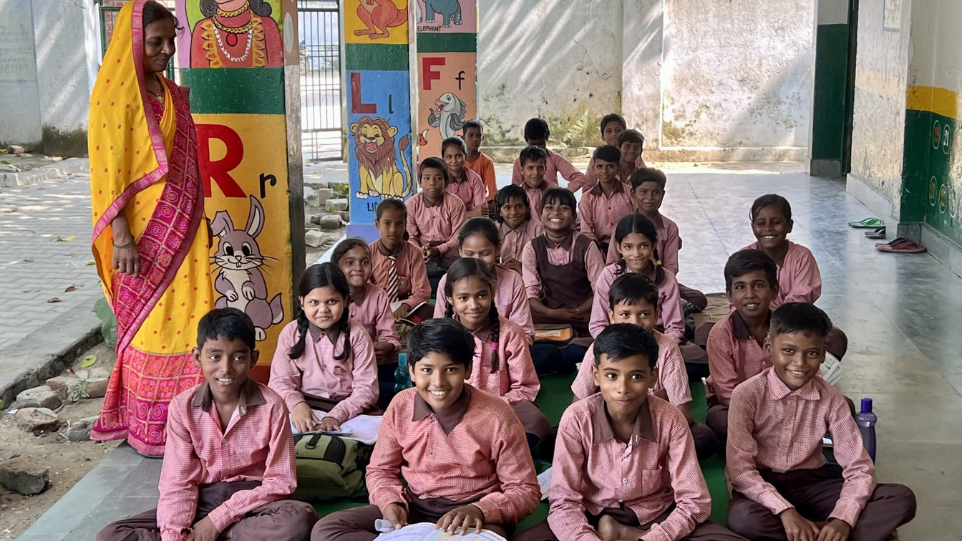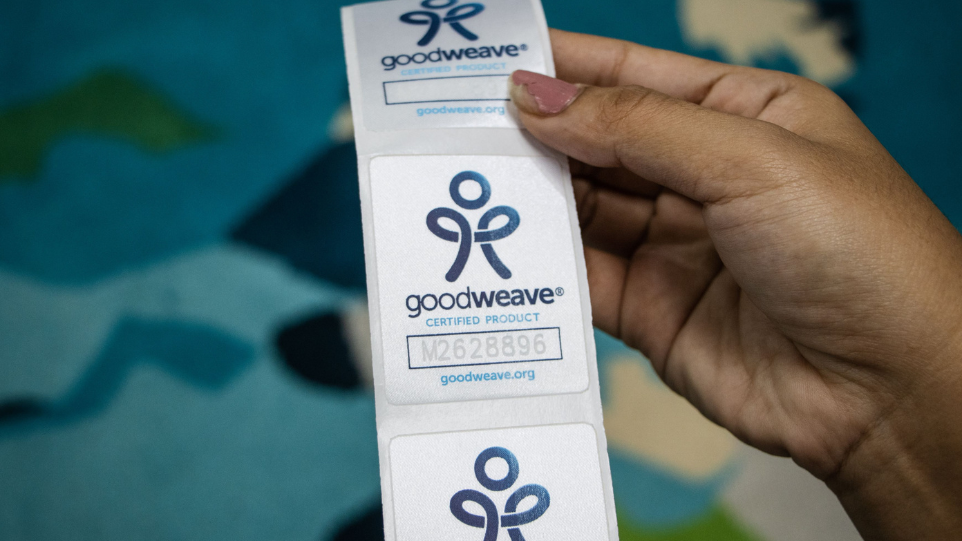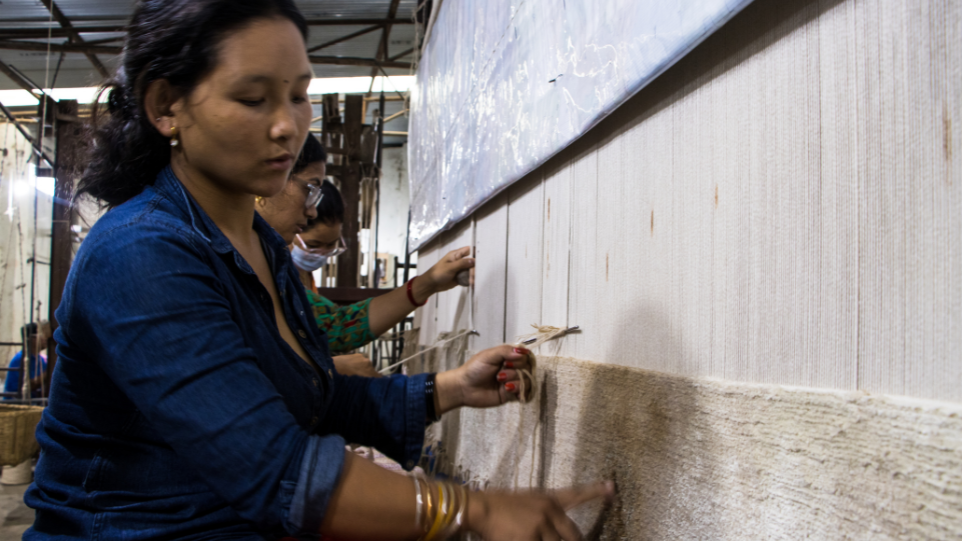Seeing our impact firsthand – reflections on my journey to India and Nepal as GoodWeave’s new CEO
November 3, 2023By Jon Jacoby
It has been a whirlwind since stepping into the role as GoodWeave’s new CEO on September 1st. My 10-day trip to India and Nepal last month with Nina Smith, GoodWeave’s founding CEO and current strategic advisor, really drove home the impact of our work on the ground and the increasingly urgent need for interventions that protect the rights of vulnerable children and informal workers in global supply chains.

My journey was both thought-provoking and heart-warming, having had the opportunity to meet with children and adult workers who have directly benefited from GoodWeave’s programs and experienced truly life-changing results. I also met with our dedicated country teams, business partners, board members, and other stakeholders in India and Nepal who are working hand-in-hand with us to end child labor and worker exploitation. Here are a few highlights.
Meeting Sumitra
In Nepal, it was extremely moving to meet with Sumitra, a survivor of child labor whose journey to reclaim her childhood and realize her rights is a remarkable story with which we’re well-acquainted. It was truly awe-inspiring to listen to her describe her journey from a carpet-weaving worksite to Hamro Ghar (Our Home), GoodWeave’s transit home for former child laborers, to the Laboratory School in Kathmandu where she will graduate in 2024, and now to receiving a scholarship for a study abroad program in Germany to pursue a nursing degree. She’s learning German already, and I know that we’ll be hearing great things about her path going forward.

Inspiring colleagues
Getting to know our country teams in India and Nepal was special. Some colleagues have been an integral part of our mission for 25 years or more, several are child labor survivors, and all are deeply dedicated to our mission and beneficiaries. The tireless efforts of these individuals on the ground bring GoodWeave’s vision to life. Visiting a GoodWeave-supported Child Friendly Community in the Mirzapur district outside of Varanasi in India, I was deeply impressed with the local facilitators who are working diligently alongside community leaders and school administrations with limited resources to deliver education and social protection to children who might otherwise be working in hazardous conditions.

Child Friendly Community in Panipat, India. Photo credit: GoodWeave International
Following in the footsteps of our founder
In India, Nina and I had the pleasure of meeting and breaking bread with Kailash Satyarthi, GoodWeave’s visionary founder and Nobel Peace Prize winner, who in 1994 gave birth to the idea of harnessing market forces to deliver a product that is child labor free. Nearly 30 years later, we at GoodWeave still uphold Kailash’s steadfast commitment to children’s fundamental right to be in school rather than hazardous work.

Photo credit: GoodWeave International
I was impacted by so many moments and experiences throughout this trip. Let me share a couple of my key take-aways.
Deep community involvement
First, I was struck most by how embedded GoodWeave is in the communities that we serve. Our deep community involvement extends beyond certification of products – in two important respects. We work with our business partners and survivors and families to deliver remedy in situations where we identify child labor. We also prevent child labor by implementing projects that empower workers and safeguard their rights and livelihoods while keeping kids in school. For example, during the trip, I visited a daycare center in Nepal supported by GoodWeave where carpet weavers’ children are well cared for, enabling parents to work with peace of mind, knowing their young children are on the path to education. Among other initiatives that I observed, it showed how our efforts to prevent child labor by supporting informal, invisible, at-risk workers in supply chains are just as significant as our inspection and remediation work.

The business case for ending child labor
Second, GoodWeave leverages the best qualities within the global carpet industry, our flagship sector program. It’s a competitive sector facing many pressures, and we visited and spoke with a variety of business partners to hear their challenges. I learned that it means a lot to our exporter licensees to be aligned with the GoodWeave Standard and to know that we’re there for them. There is a sense that together we are navigating a dynamic marketplace filled with important new rules and policies aimed at protecting the human rights of vulnerable workers and communities in supply chains at scale. The GoodWeave Standard plays a crucial role in helping them comply with new due diligence rules, as well as implement human and labor rights best practices.

The artistry of rug-making
Lastly, an obvious but key takeaway: handmade rugs are art. While I’ve worked extensively on certifications for agricultural commodities such as coffee and cocoa, there’s a unique artistry in rug weaving that demands recognition. High-quality coffee or chocolate making – or manufacturing of clothing, to name a sectoral focus for us – has a level of artistry to it. But rug weaving is at a different level. Rugs are far from commodities when you see the process firsthand. Watching the intricate and time-consuming process involved in their creation, you come to appreciate that they are incredibly labor-intensive works of art. And the skilled workers and artisans who hand-weave carpets should be protected from all forms of exploitation.

Ready to make a difference
At GoodWeave, we honor this art through a market-based model that aims to protect the rights of children and of adult workers by providing assurance that no child labor is involved in the manufacturing process of rugs, home textiles, apparel, and fashion jewelry. It is all too clear on the ground in India, Nepal, and beyond that our unique, holistic model – which includes inspection, remediation, and prevention programs – is making a positive impact in the lives of many. With greater support, we could reach many more. Having experienced our programs first-hand, I am more committed than ever to rolling up my sleeves with our talented team and key partners to make a real difference in the lives of marginalized children and workers, tackle exploitation, and enable access to quality education and dignified work.
